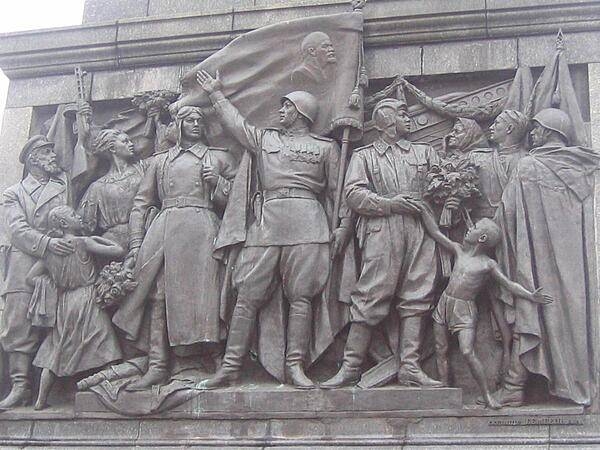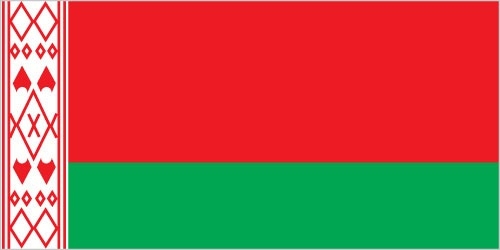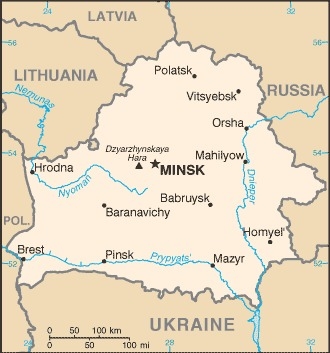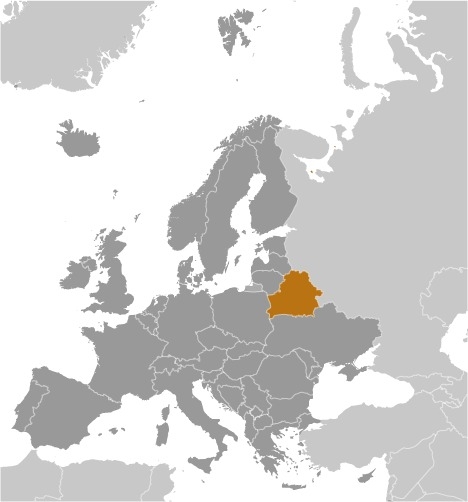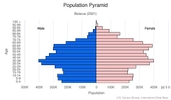Belarus
Introduction
Background
After seven decades as a constituent republic of the USSR, Belarus attained its independence in 1991. It has retained closer political and economic ties to Russia than have any of the other former Soviet republics. Belarus and Russia signed a treaty on a two-state union on 8 December 1999 envisioning greater political and economic integration. Although Belarus agreed to a framework to carry out the accord, serious implementation has yet to take place and current negotiations on further integration have been contentious. Since his election in July 1994 as the country's first and only directly elected president, Alyaksandr LUKASHENKA has steadily consolidated his power through authoritarian means and a centralized economic system. Government restrictions on political and civil freedoms, freedom of speech and the press, peaceful assembly, and religion have remained in place. Restrictions on political freedoms have grown increasingly strained following the disputed presidential election in August 2020. The election results sparked largescale protests as members of the opposition and civil society criticized the election’s validity. Alyaksandr LUKASHENKA has remained in power as the disputed winner of the presidential election after quelling protests in late 2020.
Visit the Definitions and Notes page to view a description of each topic.
Geography
Location
Eastern Europe, east of Poland
Geographic coordinates
53 00 N, 28 00 E
Map references
Europe
Area - comparative
slightly less than twice the size of Kentucky; slightly smaller than Kansas
Land boundaries
total: 3,599 km
border countries (5): Latvia 161 km, Lithuania 640 km, Poland 375 km, Russia 1312 km, Ukraine 1111 km
Coastline
0 km (landlocked)
Maritime claims
none (landlocked)
Climate
cold winters, cool and moist summers; transitional between continental and maritime
Terrain
generally flat with much marshland
Elevation
highest point: Dzyarzhynskaya Hara 346 m
lowest point: Nyoman River 90 m
mean elevation: 160 m
Natural resources
timber, peat deposits, small quantities of oil and natural gas, granite, dolomitic limestone, marl, chalk, sand, gravel, clay
Land use
agricultural land: 43.7% (2018 est.)
arable land: 27.2% (2018 est.)
permanent crops: 0.6% (2018 est.)
permanent pasture: 15.9% (2018 est.)
forest: 42.7% (2018 est.)
other: 13.6% (2018 est.)
Irrigated land
1,140 sq km (2012)
Major watersheds (area sq km)
Atlantic Ocean drainage: (Black Sea) Dnieper (533,966 sq km)
Major rivers (by length in km)
Dnieper (shared with Russia [s] and Ukraine [m]) - 2,287 km
note – [s] after country name indicates river source; [m] after country name indicates river mouth
Population distribution
a fairly even distribution throughout most of the country, with urban areas attracting larger and denser populations
Natural hazards
large tracts of marshy land
Geography - note
landlocked; glacial scouring accounts for the flatness of Belarusian terrain and for its 11,000 lakes
People and Society
Nationality
noun: Belarusian(s)
adjective: Belarusian
Ethnic groups
Belarusian 83.7%, Russian 8.3%, Polish 3.1%, Ukrainian 1.7%, other 2.4%, unspecified 0.9% (2009 est.)
Languages
Russian (official) 70.2%, Belarusian (official) 23.4%, other 3.1% (includes small Polish- and Ukrainian-speaking minorities), unspecified 3.3% (2009 est.)
major-language sample(s):
Книга фактов о мире – незаменимый источник базовой информации. (Russian)
The World Factbook, the indispensable source for basic information.
Religions
Orthodox 48.3%, Catholic 7.1%, other 3.5%, non-believers 41.1% (2011 est.)
Age structure
0-14 years: 16.09% (male 784,231/female 740,373)
15-24 years: 9.59% (male 467,393/female 441,795)
25-54 years: 43.94% (male 2,058,648/female 2,105,910)
55-64 years: 14.45% (male 605,330/female 763,972)
65 years and over: 15.93% (male 493,055/female 1,017,211) (2020 est.)
Dependency ratios
total dependency ratio: 48.9
youth dependency ratio: 25.7
elderly dependency ratio: 23.2
potential support ratio: 4.3 (2020 est.)
Median age
total: 40.9 years
male: 38 years
female: 43.9 years (2020 est.)
Population distribution
a fairly even distribution throughout most of the country, with urban areas attracting larger and denser populations
Urbanization
urban population: 79.9% of total population (2021)
rate of urbanization: 0.28% annual rate of change (2020-25 est.)
Major urban areas - population
2.039 million MINSK (capital) (2021)
Sex ratio
at birth: 1.06 male(s)/female
0-14 years: 1.06 male(s)/female
15-24 years: 1.06 male(s)/female
25-54 years: 0.98 male(s)/female
55-64 years: 0.79 male(s)/female
65 years and over: 0.48 male(s)/female
total population: 0.87 male(s)/female (2020 est.)
Mother's mean age at first birth
26.8 years (2019 est.)
Maternal mortality ratio
2 deaths/100,000 live births (2017 est.)
country comparison to the world: 181Infant mortality rate
total: 3.31 deaths/1,000 live births
male: 3.76 deaths/1,000 live births
female: 2.83 deaths/1,000 live births (2021 est.)
Life expectancy at birth
total population: 74.01 years
male: 68.6 years
female: 79.74 years (2021 est.)
Contraceptive prevalence rate
71.2% (2017)
note: percent of women aged 18-49
Drinking water source
improved: urban: 100% of population
rural: 98.3% of population
total: 99.8% of population
unimproved: urban: 0% of population
rural: 1.7% of population
total: 0.2% of population (2017 est.)
Current Health Expenditure
5.6% (2018)
Physicians density
5.19 physicians/1,000 population (2015)
Hospital bed density
10.8 beds/1,000 population (2014)
Sanitation facility access
improved: urban: 99.8% of population
rural: 97.9% of population
total: 99.4% of population
unimproved: urban: 0.2% of population
rural: 2.1% of population
total: 0.6% of population (2017 est.)
HIV/AIDS - people living with HIV/AIDS
28,000 (2020 est.)
note: estimate does not include children
HIV/AIDS - deaths
<200 (2020 est.)
note: estimate does not include children
Literacy
definition: age 15 and over can read and write
total population: 99.9%
male: 99.9%
female: 99.9% (2019)
School life expectancy (primary to tertiary education)
total: 15 years
male: 15 years
female: 16 years (2018)
Unemployment, youth ages 15-24
total: 12.4%
male: 14.3%
female: 10.2% (2020 est.)
Environment
Environment - current issues
soil pollution from pesticide use; southern part of the country contaminated with fallout from 1986 nuclear reactor accident at Chornobyl' in northern Ukraine
Environment - international agreements
party to: Air Pollution, Air Pollution-Nitrogen Oxides, Air Pollution-Sulphur 85, Antarctic-Environmental Protection, Antarctic Treaty, Biodiversity, Climate Change, Climate Change-Kyoto Protocol, Climate Change-Paris Agreement, Comprehensive Nuclear Test Ban, Desertification, Endangered Species, Environmental Modification, Hazardous Wastes, Law of the Sea, Marine Dumping-London Convention, Nuclear Test Ban, Ozone Layer Protection, Ship Pollution, Wetlands
signed, but not ratified: none of the selected agreements
Air pollutants
particulate matter emissions: 18.06 micrograms per cubic meter (2016 est.)
carbon dioxide emissions: 58.28 megatons (2016 est.)
methane emissions: 17.19 megatons (2020 est.)
Climate
cold winters, cool and moist summers; transitional between continental and maritime
Land use
agricultural land: 43.7% (2018 est.)
arable land: 27.2% (2018 est.)
permanent crops: 0.6% (2018 est.)
permanent pasture: 15.9% (2018 est.)
forest: 42.7% (2018 est.)
other: 13.6% (2018 est.)
Urbanization
urban population: 79.9% of total population (2021)
rate of urbanization: 0.28% annual rate of change (2020-25 est.)
Revenue from forest resources
forest revenues: 1.02% of GDP (2018 est.)
country comparison to the world: 52Waste and recycling
municipal solid waste generated annually: 4.28 million tons (2015 est.)
municipal solid waste recycled annually: 684,800 tons (2016 est.)
percent of municipal solid waste recycled: 16% (2016 est.)
Major rivers (by length in km)
Dnieper (shared with Russia [s] and Ukraine [m]) - 2,287 km
note – [s] after country name indicates river source; [m] after country name indicates river mouth
Major watersheds (area sq km)
Atlantic Ocean drainage: (Black Sea) Dnieper (533,966 sq km)
Total water withdrawal
municipal: 523 million cubic meters (2017 est.)
industrial: 443 million cubic meters (2017 est.)
agricultural: 431 million cubic meters (2017 est.)
Total renewable water resources
57.9 billion cubic meters (2017 est.)
Government
Country name
conventional long form: Republic of Belarus
conventional short form: Belarus
local long form: Respublika Byelarus'/Respublika Belarus'
local short form: Byelarus'/Belarus'
former: Belorussian (Byelorussian) Soviet Socialist Republic
etymology: the name is a compound of the Belarusian words "bel" (white) and "Rus" (the Old East Slavic ethnic designation) to form the meaning White Rusian or White Ruthenian
Government type
presidential republic in name, although in fact a dictatorship
Capital
name: Minsk
geographic coordinates: 53 54 N, 27 34 E
time difference: UTC+2 (7 hours ahead of Washington, DC, during Standard Time)
etymology: the origin of the name is disputed; Minsk may originally have been located 16 km to the southwest, on the banks of Menka River; remnants of a 10th-century settlement on the banks of the Menka have been found
Administrative divisions
6 regions (voblastsi, singular - voblasts') and 1 municipality* (horad); Brest, Homyel' (Gomel'), Horad Minsk* (Minsk City), Hrodna (Grodno), Mahilyow (Mogilev), Minsk, Vitsyebsk (Vitebsk)
note: administrative divisions have the same names as their administrative centers; Russian spelling provided for reference when different from Belarusian
Independence
25 August 1991 (from the Soviet Union)
National holiday
Independence Day, 3 July (1944); note - 3 July 1944 was the date Minsk was liberated from German troops, 25 August 1991 was the date of independence from the Soviet Union
Constitution
history: several previous; latest drafted between late 1991 and early 1994, signed 15 March 1994
amendments: proposed by the president of the republic through petition to the National Assembly or by petition of least 150,000 eligible voters; approval required by at least two-thirds majority vote in both chambers or by simple majority of votes cast in a referendum; amended 1996, 2004
Legal system
civil law system; note - nearly all major codes (civil, civil procedure, criminal, criminal procedure, family, and labor) were revised and came into force in 1999 and 2000
International law organization participation
has not submitted an ICJ jurisdiction declaration; non-party state to the ICCt
Citizenship
citizenship by birth: no
citizenship by descent only: at least one parent must be a citizen of Belarus
dual citizenship recognized: no
residency requirement for naturalization: 7 years
Suffrage
18 years of age; universal
Executive branch
chief of state: President Alyaksandr LUKASHENKA (since 20 July 1994)
head of government: Prime Minister Raman HALOWCHENKA (since 4 June 2020); First Deputy Prime Minister Mikalay SNAPKOW (since 4 June 2020); Deputy Prime Ministers Uladzimir KUKHARAW, Ihar PETRYSHENKA (since 18 August 2018), Yuryy NAZARAW (since 3 March 2020), Alyaksandr SUBOTSIN (since 4 June 2020)
cabinet: Council of Ministers appointed by the president
elections/appointments: president directly elected by absolute majority popular vote in 2 rounds if needed for a 5-year term (no term limits); first election took place on 23 June and 10 July 1994; according to the 1994 constitution, the next election should have been held in 1999; however, Alyaksandr LUKASHENKA extended his term to 2001 via a November 1996 referendum; subsequent election held on 9 September 2001; an October 2004 referendum ended presidential term limits and allowed the president to run and win in a third (19 March 2006), fourth (19 December 2010), fifth (11 October 2015), and sixth (9 August 2020); next election in 2025; prime minister and deputy prime ministers appointed by the president and approved by the National Assembly
election results: Alyaksandr LUKASHENKA reelected president; percent of vote - Alyaksandr LUKASHENKA (independent) 80.2%, Svyatlana TSIKHANOWSKAYA (independent) 9.9%, other 9.9%; note - widespread street protests erupted following announcement of the election results amid allegations of voter fraud
Legislative branch
description: bicameral National Assembly or Natsyyalny Skhod consists of:
Council of the Republic or Savet Respubliki (64 seats; 56 members indirectly elected by regional and Minsk city councils and 8 members appointed by the president; members serve 4-year terms)
House of Representatives or Palata Pradstawnikow (110 seats; members directly elected in single-seat constituencies by absolute majority vote in 2 rounds if needed; members serve 4-year terms)
elections:
Council of the Republic - indirect election last held on 7 November 2019
House of Representatives - last held on 17 November 2019 (next to be held in 2023); OSCE observers determined that the election was neither free nor impartial and that vote counting was problematic in a number of polling stations; pro-LUKASHENKA candidates won every seat; international observers determined that the previous elections, on 28 September 2008, 23 September 2012, and 11 September 2016 also fell short of democratic standards, with pro-LUKASHENKA candidates winning every, or virtually every, seat
election results:
Council of the Republic - percent of vote by party - NA; seats by party - NA; composition -NA
House of Representatives - percent of vote by party - NA; seats by party - KPB 11, Republican Party of Labor and Justice 6, Belarusian Patriotic Party 2, LDP 1, AP 1, independent 89; composition - men 66, women 44, percent of women 40%
note: the US does not recognize the legitimacy of the National Assembly
Judicial branch
highest courts: Supreme Court (consists of the chairman and deputy chairman and organized into several specialized panels, including economic and military; number of judges set by the president of the republic and the court chairman); Constitutional Court (consists of 12 judges, including a chairman and deputy chairman)
judge selection and term of office: Supreme Court judges appointed by the president with the consent of the Council of the Republic; judges initially appointed for 5 years and evaluated for life appointment; Constitutional Court judges - 6 appointed by the president and 6 elected by the Council of the Republic; the presiding judge directly elected by the president and approved by the Council of the Republic; judges can serve for 11 years with an age limit of 70
subordinate courts: oblast courts; Minsk City Court; town courts; Minsk city and oblast economic courts
Political parties and leaders
pro-government parties:
Belarusian Agrarian Party or AP [Mikhail RUSY]
Belarusian Patriotic Party [Mikalay ULAKHOVICH]
Belarusian Social Sport Party [Uladzimir ALEKSANDROVICH]
Communist Party of Belarus or KPB [Alyaksey SOKOL]
Liberal Democratic Party or LDP [Aleh GAYDUKEVICH]
Republican Party [Uladzimir BELAZOR]
Republican Party of Labor and Justice [Alyaksandr STSYAPANAW]
Social Democratic Party of Popular Accord [Syarhey YERMAK]
opposition parties:
Belarusian Christian Democracy Party [Paval SEVYARYNETS, Volha KAVALKOVA, Vital RYMASHEWSKI] (unregistered)
Belarusian Party of the Green [Anastasiya DOROFEYEVA]
Belarusian Party of the Left "Just World" [Syarhey KALYAKIN]
Belarusian Popular Front or BPF [Ryhor KASTUSYOW]
Belarusian Social-Democratic Assembly [Syarhey CHERACHEN]
Belarusian Social Democratic Party ("Assembly") or BSDPH [Ihar BARYSAW]
Belarusian Social Democratic Party (People's Assembly) [Mikalay STATKEVICH] (unregistered)
Christian Conservative Party or BPF [Zyanon PAZNYAK]
United Civic Party or UCP [Mikalay KAZLOW]
International organization participation
BSEC (observer), CBSS (observer), CEI, CIS, CSTO, EAEC, EAEU, EAPC, EBRD, FAO, GCTU, IAEA, IBRD, ICAO, ICC (NGOs), ICRM, IDA, IFC, IFRCS, ILO, IMF, IMSO, Interpol, IOC, IOM, IPU, ISO, ITU, ITUC (NGOs), MIGA, NAM, NSG, OPCW, OSCE, PCA, PFP, SCO (dialogue member), UN, UNCTAD, UNESCO, UNIDO, UNIFIL, UNWTO, UPU, WCO, WFTU (NGOs), WHO, WIPO, WMO, WTO (observer), ZC
Diplomatic representation in the US
chief of mission: Ambassador (vacant; recalled by Belarus in 2008); Charge d'Affaires Dmitry BASIK (since 9 July 2019)
chancery: 1619 New Hampshire Avenue NW, Washington, DC 20009
telephone: [1] (202) 986-1606
FAX: [1] (202) 986-1805
email address and website:
usa@mfa.gov.by
Diplomatic representation from the US
chief of mission: Ambassador Julie Fisher (since 23 December 2020); Charge d'Affaires Ruben HARUTUNIAN (since May 2021)
embassy: 46 Starovilenskaya Street, Minsk 220002
mailing address: 7010 Minsk Place, Washington DC 20521-7010
telephone: [375] (17) 210-12-83/217-73-47/217-73-48
FAX: [375] (17) 334-78-53
email address and website:
ConsularMinsk@state.gov
https://by.usembassy.gov/
Flag description
red horizontal band (top) and green horizontal band one-half the width of the red band; a white vertical stripe on the hoist side bears Belarusian national ornamentation in red; the red band color recalls past struggles from oppression, the green band represents hope and the many forests of the country
National symbol(s)
no clearly defined current national symbol, the mounted knight known as Pahonia (the Chaser) is the traditional Belarusian symbol; national colors: green, red, white
National anthem
name: "My, Bielarusy" (We Belarusians)
lyrics/music: Mikhas KLIMKOVICH and Uladzimir KARYZNA/Nester SAKALOUSKI
note: music adopted 1955, lyrics adopted 2002; after the fall of the Soviet Union, Belarus kept the music of its Soviet-era anthem but adopted new lyrics; also known as "Dziarzauny himn Respubliki Bielarus" (State Anthem of the Republic of Belarus)
Economy
Economic overview
As part of the former Soviet Union, Belarus had a relatively well-developed industrial base, but it is now outdated, inefficient, and dependent on subsidized Russian energy and preferential access to Russian markets. The country’s agricultural base is largely dependent on government subsidies. Following the collapse of the Soviet Union, an initial burst of economic reforms included privatization of state enterprises, creation of private property rights, and the acceptance of private entrepreneurship, but by 1994 the reform effort dissipated. About 80% of industry remains in state hands, and foreign investment has virtually disappeared. Several businesses have been renationalized. State-owned entities account for 70-75% of GDP, and state banks make up 75% of the banking sector.
Economic output declined for several years following the break-up of the Soviet Union, but revived in the mid-2000s. Belarus has only small reserves of crude oil and imports crude oil and natural gas from Russia at subsidized, below market, prices. Belarus derives export revenue by refining Russian crude and selling it at market prices. Russia and Belarus have had serious disagreements over prices and quantities for Russian energy. Beginning in early 2016, Russia claimed Belarus began accumulating debt – reaching $740 million by April 2017 – for paying below the agreed price for Russian natural gas and Russia cut back its export of crude oil as a result of the debt. In April 2017, Belarus agreed to pay its gas debt and Russia restored the flow of crude.
New non-Russian foreign investment has been limited in recent years, largely because of an unfavorable financial climate. In 2011, a financial crisis lead to a nearly three-fold devaluation of the Belarusian ruble. The Belarusian economy has continued to struggle under the weight of high external debt servicing payments and a trade deficit. In mid-December 2014, the devaluation of the Russian ruble triggered a near 40% devaluation of the Belarusian ruble.
Belarus’s economy stagnated between 2012 and 2016, widening productivity and income gaps between Belarus and neighboring countries. Budget revenues dropped because of falling global prices on key Belarusian export commodities. Since 2015, the Belarusian government has tightened its macro-economic policies, allowed more flexibility to its exchange rate, taken some steps towards price liberalization, and reduced subsidized government lending to state-owned enterprises. Belarus returned to modest growth in 2017, largely driven by improvement of external conditions and Belarus issued sovereign debt for the first time since 2011, which provided the country with badly-needed liquidity, and issued $600 million worth of Eurobonds in February 2018, predominantly to US and British investors.
Real GDP (purchasing power parity)
$179.97 billion note: data are in 2017 dollars (2020 est.)
$181.61 billion note: data are in 2017 dollars (2019 est.)
$179.1 billion note: data are in 2017 dollars (2018 est.)
note: data are in 2010 dollars
Real GDP growth rate
1.22% (2019 est.)
3.17% (2018 est.)
2.53% (2017 est.)
Real GDP per capita
$19,100 note: data are in 2017 dollars (2020 est.)
$19,300 note: data are in 2017 dollars (2019 est.)
$18,900 note: data are in 2017 dollars (2018 est.)
note: data are in 2010 dollars
GDP (official exchange rate)
$63.168 billion (2019 est.)
Inflation rate (consumer prices)
5.6% (2019 est.)
4.8% (2018 est.)
6% (2017 est.)
Credit ratings
Fitch rating: B (2018)
Moody's rating: B3 (2018)
Standard & Poors rating: B (2017)
GDP - composition, by sector of origin
agriculture: 8.1% (2017 est.)
industry: 40.8% (2017 est.)
services: 51.1% (2017 est.)
GDP - composition, by end use
household consumption: 54.8% (2017 est.)
government consumption: 14.6% (2017 est.)
investment in fixed capital: 24.9% (2017 est.)
investment in inventories: 5.7% (2017 est.)
exports of goods and services: 67% (2017 est.)
imports of goods and services: -67% (2017 est.)
Agricultural products
milk, potatoes, sugar beet, wheat, triticale, barley, maize, rye, rapeseed, poultry
Industries
metal-cutting machine tools, tractors, trucks, earthmovers, motorcycles, synthetic fibers, fertilizer, textiles, refrigerators, washing machines and other household appliances
Labor force - by occupation
agriculture: 9.7%
industry: 23.4%
services: 66.8% (2015 est.)
Unemployment rate
0.8% (2017 est.)
1% (2016 est.)
note: official registered unemployed; large number of underemployed workers
Population below poverty line
5% (2019 est.)
Gini Index coefficient - distribution of family income
25.2 (2018 est.)
21.7 (1998)
Household income or consumption by percentage share
lowest 10%: 3.8%
highest 10%: 21.9% (2008)
Budget
revenues: 22.15 billion (2017 est.)
expenditures: 20.57 billion (2017 est.)
Fiscal year
calendar year
Current account balance
-$931 million (2017 est.)
-$1.669 billion (2016 est.)
Exports
$37.04 billion note: data are in current year dollars (2020 est.)
$41.97 billion note: data are in current year dollars (2019 est.)
$42.27 billion note: data are in current year dollars (2018 est.)
Exports - partners
Russia 42%, Ukraine 13%, United Kingdom 7% (2019)
Exports - commodities
refined petroleum, fertilizers, cheese, delivery trucks, crude petroleum (2019)
Imports
$35.16 billion note: data are in current year dollars (2020 est.)
$42.38 billion note: data are in current year dollars (2019 est.)
$41.34 billion note: data are in current year dollars (2018 est.)
Imports - partners
Russia 57%, China 7%, Poland 5%, Germany 5%, Ukraine 5% (2019)
Imports - commodities
crude petroleum, natural gas, cars and vehicle parts, packaged medicines, broadcasting equipment (2019)
Reserves of foreign exchange and gold
$7.315 billion (31 December 2017 est.)
$4.927 billion (31 December 2016 est.)
Debt - external
$39.847 billion (2019 est.)
$39.297 billion (2018 est.)
Exchange rates
Belarusian rubles (BYB/BYR) per US dollar -
1.9 (2017 est.)
2 (2016 est.)
2 (2015 est.)
15,926 (2014 est.)
10,224.1 (2013 est.)
Unemployment, youth ages 15-24
total: 12.4%
male: 14.3%
female: 10.2% (2020 est.)
Energy
Electricity access
electrification - total population: 100% (2020)
Electricity - installed generating capacity
10.04 million kW (2016 est.)
country comparison to the world: 59Electricity - from fossil fuels
96% of total installed capacity (2016 est.)
country comparison to the world: 37Electricity - from nuclear fuels
0% of total installed capacity (2017 est.)
country comparison to the world: 47Electricity - from hydroelectric plants
1% of total installed capacity (2017 est.)
country comparison to the world: 145Electricity - from other renewable sources
3% of total installed capacity (2017 est.)
country comparison to the world: 120Refined petroleum products - production
477,200 bbl/day (2015 est.)
country comparison to the world: 34Refined petroleum products - consumption
141,000 bbl/day (2016 est.)
country comparison to the world: 68Natural gas - proved reserves
2.832 billion cu m (1 January 2018 est.)
country comparison to the world: 95Communications
Telephones - fixed lines
total subscriptions: 4,406,585 (2020)
subscriptions per 100 inhabitants: 46.63 (2020 est.)
Telephones - mobile cellular
total subscriptions: 11,704,084 (2020)
subscriptions per 100 inhabitants: 123.9 (2020 est.)
Telecommunication systems
general assessment: government owns and administers backbone network and much of telecom market with no independent regulator; government and telecom regulator are concluding three major programs aimed at developing the telecom sector and digital economy to enable 5G services and extension of fiber infrastructure; growing applications for smart cities; developing mobile broadband and data services to rural areas; commercial LTE services extended to 80% of the population; operators provide standalone 5G service and NB-IoT services; international connection through fiber optic and terrestrial link, nascent satellite system; importer of broadcasting equipment from China (2020)
domestic: fixed-line teledensity is improving although rural areas continue to be underserved, 48 per 100 fixed-line; mobile-cellular teledensity now approaches 123 telephones per 100 persons (2019)
international: country code - 375; Belarus is landlocked and therefore a member of the Trans-European Line (TEL), Trans-Asia-Europe (TAE) fiber-optic line, and has access to the Trans-Siberia Line (TSL); 3 fiber-optic segments provide connectivity to Latvia, Poland, Russia, and Ukraine; worldwide service is available to Belarus through this infrastructure; additional analog lines to Russia; Intelsat, Eutelsat, and Intersputnik earth stations; almost 31,000 base stations in service in 2019 (2020)
note: the COVID-19 pandemic continues to have a significant impact on production and supply chains globally; since 2020, some aspects of the telecom sector have experienced downturn, particularly in mobile device production; many network operators delayed upgrades to infrastructure; progress towards 5G implementation was postponed or slowed in some countries; consumer spending on telecom services and devices was affected by large-scale job losses and the consequent restriction on disposable incomes; the crucial nature of telecom services as a tool for work and school from home became evident, and received some support from governments
Broadcast media
7 state-controlled national TV channels; Polish and Russian TV broadcasts are available in some areas; state-run Belarusian Radio operates 5 national networks and an external service; Russian and Polish radio broadcasts are available (2019)
Internet users
total: 7.82 million (2021 est.)
percent of population: 85.09% (2020 est.)
Broadband - fixed subscriptions
total: 3,255,552 (2020)
subscriptions per 100 inhabitants: 34.45 (2020 est.)
Transportation
National air transport system
number of registered air carriers: 2 (2020)
inventory of registered aircraft operated by air carriers: 30
annual passenger traffic on registered air carriers: 2,760,168 (2018)
annual freight traffic on registered air carriers: 1.9 million mt-km (2018)
Airports - with paved runways
total: 33
over 3,047 m: 1
2,438 to 3,047 m: 20
1,524 to 2,437 m: 4
914 to 1,523 m: 1
under 914 m: 7 (2017)
Airports - with unpaved runways
total: 32
over 3,047 m: 1
1,524 to 2,437 m: 1
914 to 1,523 m: 2
under 914 m: 28 (2013)
Heliports
1 (2013)
Pipelines
5386 km gas, 1589 km oil, 1730 km refined products (2013)
Railways
total: 5,528 km (2014)
standard gauge: 25 km 1.435-m gauge (2014)
broad gauge: 5,503 km 1.520-m gauge (874 km electrified) (2014)
Waterways
2,500 km (major rivers are the west-flowing Western Dvina and Neman Rivers and the south-flowing Dnepr River and its tributaries, the Berezina, Sozh, and Pripyat Rivers) (2011)
country comparison to the world: 35Ports and terminals
river port(s): Mazyr (Prypyats')
Military and Security
Military and security forces
Belarus Armed Forces: Army, Air and Air Defense Force, Special Operations Force, Special Troops (electronic warfare, signals, engineers, biological/chemical/nuclear protection troops, etc); Ministry of Interior: State Border Troops, Militia, Internal Troops (2021)
Military expenditures
1.2% of GDP (2020 est.)
1.2% of GDP (2019)
1.2% of GDP (2018)
1.2% of GDP (2017)
1.3% of GDP (2016)
Military and security service personnel strengths
approximately 45,000 active duty troops; information on the individual services varies, but probably includes about 25,000 Army, 15,000 Air/Air Defense, and 5,000 Special Operations forces (2021)
Military equipment inventories and acquisitions
the inventory of the Belarus Armed Forces is comprised of Russian-origin equipment; Belarus's defense industry manufactures some equipment, including vehicles, guided weapons, and electronic warfare systems (2021)
Military service age and obligation
18-27 years of age for compulsory military or alternative service; conscript service obligation is 12-18 months, depending on academic qualifications, and 24-36 months for alternative service, depending on academic qualifications; 17 year olds are eligible to become cadets at military higher education institutes, where they are classified as military personnel (2021)
Military - note
Belarus has close security ties with Russia, including an integrated air and missile defense system, joint training exercises, and the establishment of three joint training centers since 2020 (1 in Belarus, 2 in Russia); Russia is the principal supplier of arms to Belarus, and Belarusian troops reportedly train on Russian equipment; Russia leases from Belarus a strategic ballistic missile defense site operated by Russian Aerospace Forces and a global communications facility for the Russian Navy; in 2020, the countries signed an agreement allowing for close security cooperation between the Belarusian Ministry of Interior and the Russian National Guard, including protecting public order and key government facilities, and combating extremism and terrorism
Belarus has been a member of the Collective Security Treaty Organization (CSTO) since 1994 and contributes troops to CSTO's rapid reaction force
Transnational Issues
Disputes - international
boundary demarcated with Latvia and Lithuania; as a member state that forms part of the EU's external border, Poland has implemented strict Schengen border rules to restrict illegal immigration and trade along its border with Belarus
Refugees and internally displaced persons
stateless persons: 6,296 (2020)
Trafficking in persons
current situation: human traffickers exploit domestic and foreign victims and exploit Belarusians abroad; the majority of trafficking victims are men subjected to forced labor; most Belarusian victims are trafficked in Belarus and Russia, but also in Poland, Turkey, and other Eurasian and Middle Eastern countries; the government continued to subject factory workers, civil servants, and students to state-sponsored forced labor harvesting crops on state-owned farms or cleaning streets
tier rating: Tier 3 — Belarus does not fully meet the minimum standards for the elimination of trafficking because of a government policy or pattern of government-sponsored forced labor in public works projects and the agricultural sector; however, authorities convicted traffickers under its trafficking statute for the first time in eight years, increased training for law enforcement officers, and confirmed significantly more victims; the government adopted a national action plan to protect minors from sexual violence and exploitation (2020)
Illicit drugs
limited cultivation of opium poppy and cannabis, mostly for the domestic market; transshipment point for illicit drugs to and via Russia, and to the Baltics and Western Europe; a small and lightly regulated financial center; anti-money-laundering legislation does not meet international standards and was weakened further when know-your-customer requirements were curtailed in 2008; few investigations or prosecutions of money-laundering activities
